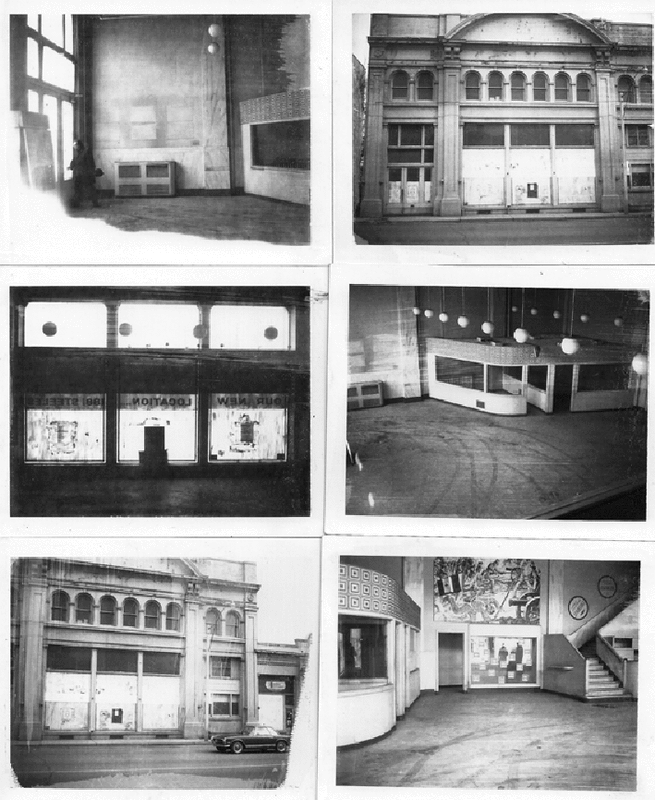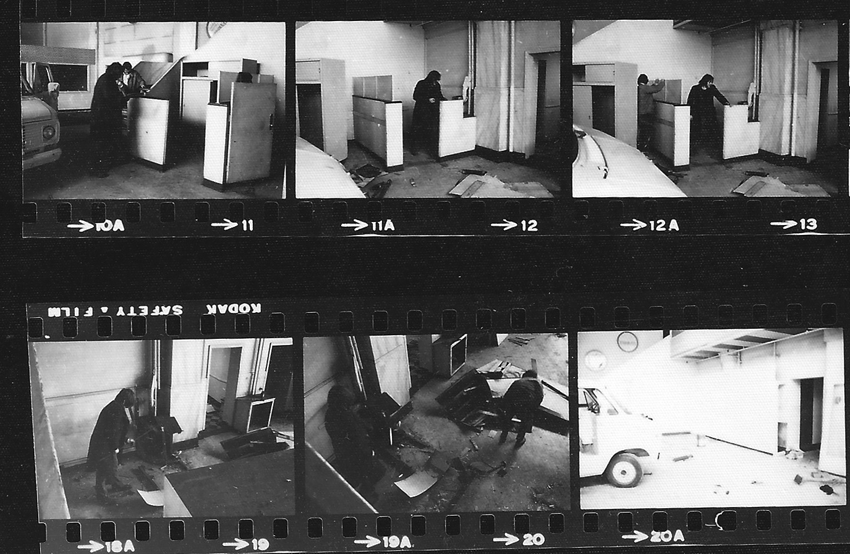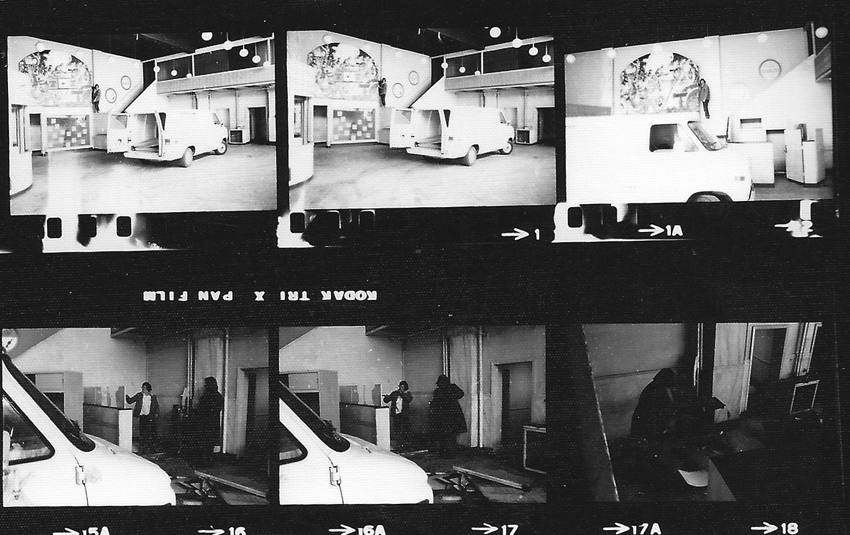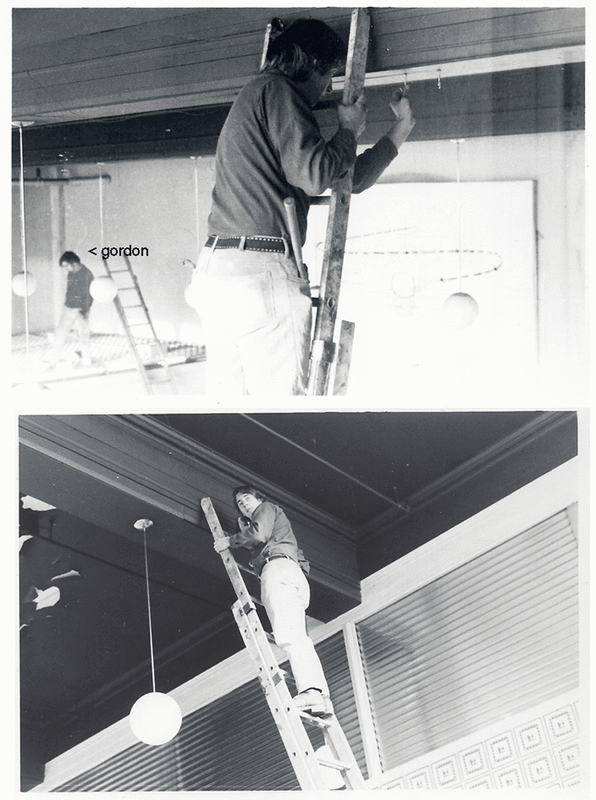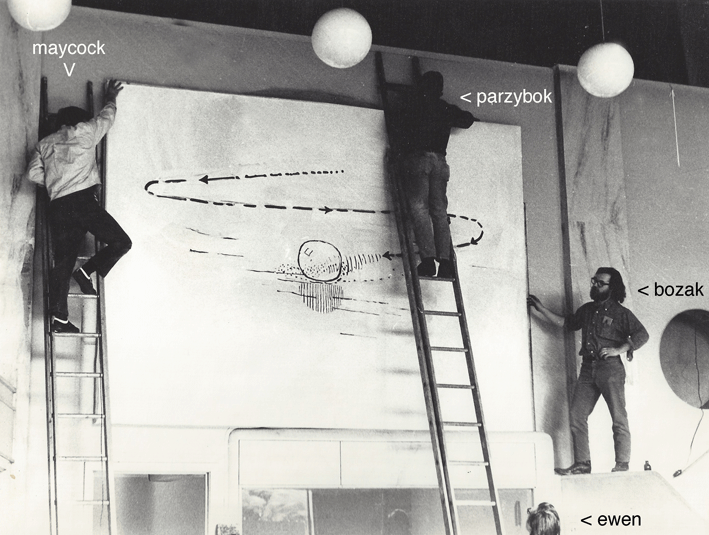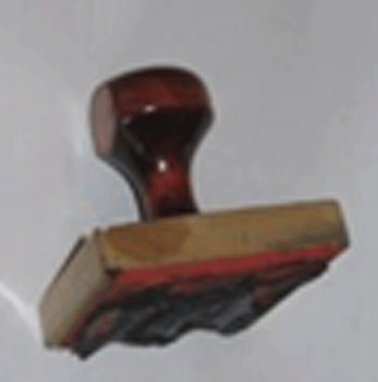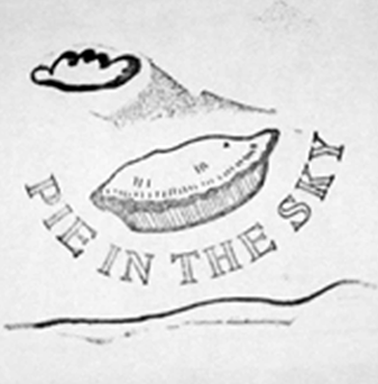pie in the sky
The saga begins...
On a Saturday - early summer 1970 - businessman Norman Sky, arrived at the gallery where I worked as education curator and where my own work happened to be on exhibition. After walking around the gallery with Norman, he told me that he had been touring the world visiting galleries and that he would like to help young artists. We looked at my work and discussed what Norman might mean by 'helping artists'. I took him to visit the Warehouse Co-op show that was in London at the time and suggested that we were all making the kind of non-commercial art that could benefit from the backing of a person who had an interest in helping young artists. Norman appeared warm to the idea so we agreed to continue the conversation.
In the hope that Norman would not lose interest, I spoke with several of the artists in the Warehouse Co-op and we put together a new group with the intention of availing ourselves of Norman's help to show our work in Toronto, Norman's home town. The group's interest was to secure a venue that was appropriate to the work and to the conditions under which we believed our work should be shown. We hoped to secure a centrally-located space that had no previous connection to art activity; that had a feel not unlike that of the Warehouse Co-op space; and that could house a large exhibition funded from private and public sources. Norman represented the potential for access to private support but, to get the ball rolling, the group agreed to finance itself until we could apply for Arts Council support.
Throughout the late summer and early fall, and at our expense, members of the group made trips to Toronto to inspect potential venues that Norman had lined up for us. These spaces included a fully-occupied warehouse, the top floor of a prominent bank and a vacant funeral home. None of the spaces seemed appropriate to our interests and needs. There was no available space in the warehouse; we did not want to be a sideshow for a bank; and the funeral home space was altogether too strange and poorly configured - although, along the way, we did meet some very interesting individuals.
By October and not having found suitable space, we decided to part company with Norman and continue the search on our own. Surprisingly quickly, we came across a centrally-located, recently-vacated Chev-Olds showroom at 77 Avenue Road just north of Bloor Street. We could only look through the windows but it appeared to meet all our needs. It was in a great location, was a big, open space that felt nothing like a gallery and, clearly, had the potential to house a large exhibition.
On a Saturday - early summer 1970 - businessman Norman Sky, arrived at the gallery where I worked as education curator and where my own work happened to be on exhibition. After walking around the gallery with Norman, he told me that he had been touring the world visiting galleries and that he would like to help young artists. We looked at my work and discussed what Norman might mean by 'helping artists'. I took him to visit the Warehouse Co-op show that was in London at the time and suggested that we were all making the kind of non-commercial art that could benefit from the backing of a person who had an interest in helping young artists. Norman appeared warm to the idea so we agreed to continue the conversation.
In the hope that Norman would not lose interest, I spoke with several of the artists in the Warehouse Co-op and we put together a new group with the intention of availing ourselves of Norman's help to show our work in Toronto, Norman's home town. The group's interest was to secure a venue that was appropriate to the work and to the conditions under which we believed our work should be shown. We hoped to secure a centrally-located space that had no previous connection to art activity; that had a feel not unlike that of the Warehouse Co-op space; and that could house a large exhibition funded from private and public sources. Norman represented the potential for access to private support but, to get the ball rolling, the group agreed to finance itself until we could apply for Arts Council support.
Throughout the late summer and early fall, and at our expense, members of the group made trips to Toronto to inspect potential venues that Norman had lined up for us. These spaces included a fully-occupied warehouse, the top floor of a prominent bank and a vacant funeral home. None of the spaces seemed appropriate to our interests and needs. There was no available space in the warehouse; we did not want to be a sideshow for a bank; and the funeral home space was altogether too strange and poorly configured - although, along the way, we did meet some very interesting individuals.
By October and not having found suitable space, we decided to part company with Norman and continue the search on our own. Surprisingly quickly, we came across a centrally-located, recently-vacated Chev-Olds showroom at 77 Avenue Road just north of Bloor Street. We could only look through the windows but it appeared to meet all our needs. It was in a great location, was a big, open space that felt nothing like a gallery and, clearly, had the potential to house a large exhibition.
We sought out the owner of the building and made an appointment to pitch the idea of an exhibition. Again surprisingly quickly, we secured a rent-free period for early in 1971 and better yet in terms of our desire for a non-art-related space, the building was scheduled for demolition later that spring.
With a clear time-frame and generous support in kind from John Turner, the owner of 77 Avenue road, we approached the Ontario Arts Council for financial assistance. In order to apply for funding, we needed to incorporate which meant finding a name for the project. We elected to honour the name of our catalytic, would-be benefactor Norman Sky. Pie in the Sky was born.
Pie in the Sky comprised Don Bonham (1940-2014), Robert Bozak, Paterson Ewen (1925-2002), Dave Gordon, Steve Parzybok (1944-1999) and me.
With a clear time-frame and generous support in kind from John Turner, the owner of 77 Avenue road, we approached the Ontario Arts Council for financial assistance. In order to apply for funding, we needed to incorporate which meant finding a name for the project. We elected to honour the name of our catalytic, would-be benefactor Norman Sky. Pie in the Sky was born.
Pie in the Sky comprised Don Bonham (1940-2014), Robert Bozak, Paterson Ewen (1925-2002), Dave Gordon, Steve Parzybok (1944-1999) and me.
Not knowing whether we would be supported by the Arts Council, but certain of our commitment to the project, the group made day-long, weekend trips to Toronto to clean up and adapt the space to our needs. This included removing partitions between the salesmen's booths and re-surfacing some of the walls. Being able to drive a van right into the space was a bonus especially as we were working through an Ontario winter.
Our application to the Arts Council was successful and we were provided with funds sufficient to purchase drywall and white paint, as well a leaving room to budget for advertising and an opening reception.
Pie in the Sky was installed over a period of ten days and, as the one with a head for heights, Steve became Ladder-Man-Designate. Not to be left out, Dave also found his way up onto the ceiling of an office or two.
Pie in the Sky opened in one of the worst March snowstorms on record. The weather was not in our plans. But, as planned, a few dozen fresh over-night-baked pies were driven up the snow-covered 401 from London and were served with cider to an enthusiastic Toronto crowd. Downchild blues band, hired for live music, played for two-plus hours providing a truly celebratory atmosphere.
Aside from a brief review in the Toronto Star and a CBC Morningside interview with Peter Gzowski that Bob Bozak lined up, nothing else appeared in the media. At the request of Dorothy Cameron, at the time an Arts Canada reviewer, we 'rushed' 8x10s to her office. But the review, if indeed one was written, must have ended up on the cutting-room floor missing an opportunity to report upon a significant milestone in the career of Paterson Ewen. Pie in the Sky was the first public exposure of Pat’s Life Stream & Planetary paintings, work that anticipated his rise to prominence. Not being reviewed when we were clearly the most interesting exhibition in town was a disappointment.
Over the two-weeks of the exhibition, almost 2000 visitors viewed the work so we had no complaints about first-hand exposure.
Over the two-weeks of the exhibition, almost 2000 visitors viewed the work so we had no complaints about first-hand exposure.
post script... It appears that I was not the only one to have hung on to Pie memorabilia. Dave Gordon kept safe our official rubber stamp: twentieth century low-tech branding at its best.
PIE IN THE SKY in black & white:
